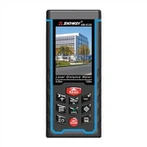Specimen Preparation Requirements for Fluorescence Microscopy
Requirements for Preparation of Specimen for Fluorescence Microscopy
(1) Glass slide
The thickness of the slide glass should be between 0.8-L2mm. A slide that is too thick will absorb more light on the one hand and cannot focus the excitation light on the specimen on the other hand. Slides must be smooth, uniform in thickness, and free from obvious autofluorescence. Sometimes quartz slides are used.
(2) Cover glass
The thickness of the cover glass is about 0.17mm, smooth. In order to strengthen the excitation light, an interference cover glass can also be used, which is a special cover glass coated with several layers of substances (such as magnesium fluoride) that have different interference effects on light of different wavelengths, which can make the fluorescence smooth. Excitation light is passed through, and the excitation light is reflected, and this reflected excitation light can excite the specimen.
(3) Specimen
Tissue slices or other specimens should not be too thick. If the thickness is too thick, most of the excitation light will be consumed in the lower part of the specimen, while the upper part directly observed by the objective lens cannot be fully excited. In addition, fluorescence caused by overlapping cells or impurities, background non-specific staining affects the judgment.
(4) mirror oil
Generally, when observing specimens with dark-field fluorescence microscopes and oil immersion microscopes, immersion oil must be used. It is best to use special non-fluorescent immersion oil. Glycerin can also be used instead, and liquid paraffin can also be used, but the refractive index is low, which has a slight impact on image quality.
Understanding the Light Cube of Fluorescence Microscopy
Fluorescence is the light that electrons in a substance absorb light energy from a low-energy state to a high-energy state, and then release light when it returns to a low-energy state. It is non-temperature radiated light—luminescence. That is: the substance absorbs short-wave light, enters an excited state, and emits long-wave light.
Whether it is the autofluorescence of the substance, the fluorescent dye or the fluorescent protein expressed by fusion, it needs to be excited by a specific wavelength of light (Excitation). After the electrons migrate and lose energy, they emit light of a specific long wavelength (Emision). , which can be collected by the detection system to achieve the function of identifying specific fluorescence.
What is a fluorescent light cube?
In fluorescence microscope observation and imaging, the excitation light of specific wavelength and the corresponding long-wavelength emission light are provided by the fluorescence light cube, so that the fluorescence signal can be collected by the naked eye, display screen or camera. Therefore, the fluorescence light cube determines what can be detected The key device of the fluorescence signal, its characteristics include EX: excitation wavelength filter parameters, EM: emission wavelength filter parameters and DM: dichotomous mirror parameters. Take the DAPI light cube of Revolve integrated fluorescence microscope as an example, EX: 385/30, EM: 450/50, DM: 425.
The light emitted by the light source passes through DAPI EX to obtain excitation light in a specific wavelength range, that is, light of 385±15nm, which specifically excites fluorescent substances that can only be excited within this range; the DM dichroic mirror separates the excitation light from the fluorescence Optical elements, as special mirrors, reflect only specific wavelengths of light and allow all other wavelengths to pass through, so only >425nm light can be transmitted to the EM; EM emission filters are used to separate the fluorescence emitted by the fluorophore from other background Optical elements for separating light. Emission filters transmit light at the fluorescence wavelength through the dichroic mirror while blocking all other light that leaks from the excitation light source (reflected from the sample or optics). The emitted light wavelength is greater than EM to be observed, that is, only light within the range of 450±25nm enters the detection system. Proper selection of EX, EM filters, and DM dichotomies can help researchers achieve higher signal-to-noise ratios (S/N).






